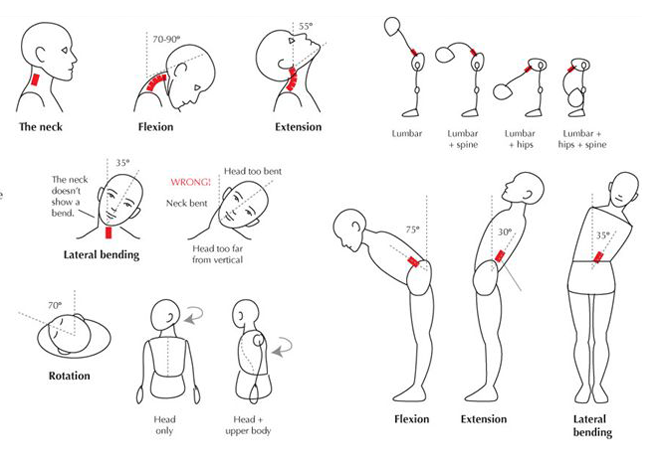10 Things I’ve Learned Being a Chiropractor for 7 Years.
1. There’s no cure for your back pain, neck pain, and headaches.
No single intervention can cure most back pain, neck pain, and headaches. As a chiropractor, I see that most of my patients have the potential to get better. However, incremental changes are necessary. You can increase your body’s vital capacity to heal through practice. Because of this, you can sustain the health of your spine over the long term. Therefore, healthy habits are most important. Being the best chiropractor means helping people struggling with reoccurring problems to develop healthier habits. Several risk factors are the root of the problem:
- Sedentary lifestyle
- Core muscle inhibition
- Dynamic motion deficiency
- Repetitive overuse injury
- Mental and emotional stress
- Social pressure
- Poor sleep quality
- Nutrition deficiency
Most patients planning to see a chiropractor struggle with several of these key risk factors. Learn to understand these factors and work to change your habits daily. If you start to think of your health as a work in progress, you’re more likely to change for the better. While you can’t change the beginning of your story, you can act now to change the ending.
How often do people experience problems that a chiropractor can help to solve?
Approximately 80% of you can expect to experience back pain at some point in your life. Americans with back and neck problems spend double, $3 thousand more, on health care every year. Spending–mostly on risky drugs and surgery–has greatly increased over time. Despite that effort, these problems have not decreased on average. Every year, $90 billion is spent treating it in the United States. In addition, $10 to $20 billion is spent counting lost productivity. However, visits to the chiropractor–safer and more effective than drugs–account for only $14 billion of the total expenditure.
2. Your body can and will heal itself.
You have experienced healing before. We know our bodies have the capacity to heal. However, it’s easy to forget it’s happening inside of us. This is most likely because we can’t see it working. Your body’s healing power can help you to recover from your back pain, neck pain, and headaches.

Your back heals using the same healing power that causes a scratch on your hand to heal. Just because you can’t see it doesn’t mean it’s not real. MRI scans can show old disc injuries, partial tears, and other traumas that may no longer cause you any pain. 90 to 95 percent of MRI scans for nonspecific lower back pain do not help to identify the source of the problem. Put another way, they are very often unremarkable. Old scars on your skin don’t hurt anymore. The same can be true for your scars on the inside.
3. Seeing a chiropractor is uniquely beneficial for your health.
Chiropractors want you to know that your joints can develop a directional bias toward one side. This bias causes a restricted range of movement–usually toward the opposite side. Also, this can affect your activities of daily living. Spinal manipulative therapy, a chiropractor’s specialty, is the most effective method for resolving this problem.

Also, exercise is incredibly important to maintain joint mobility. However, your joint imbalances may prevent proper exercise. As a result, the exercise may not be as effective. While some require help from a chiropractor, others will find it difficult to restore their joint balance with anything but exercise. Furthermore, others will find that nothing but better sleep or diet will solve the problem.
4. Incremental improvement works.
Intervention by a chiropractor may be necessary for you to change the course of your journey toward better health. However, small repeated changes to your daily habits are crucial for your success. These small changes are largely responsible for sustainable holistic health. Small gains in range of movement, flexibility, and balance have compounding benefits. They keep on giving you more power to improve your health in the future.

As you learn, any improvement–no matter how small–will move you forward. As a result, you will be able to better adapt to your environment. First, start by moving your stiffest joints gently to their comfortable maximum range. Next, explore all 6 directions: flexion, extension, left & right lateral bending, and left & right rotation.
Keep exploring
Above all, get creative with your movements to seek out and find the most important directions to focus on. Your physical self-awareness, or proprioception, will improve as you explore. In time, that self-awareness can guide you to a new understanding of what your body needs for you to achieve musculoskeletal health.
5. Sore is safe. Pain protects you.
Chiropractors understand the evidence that pain is in the brain. In other words, pain is an experience rooted in biological, psychological, and sociological factors. I’m certain that most people want to completely escape their pain. However, a total lack of pain isn’t as desirable as you might think. Some people are born without the ability to feel pain. They may receive the very rare diagnosis of Congenital Insensitivity to Pain with Anhydrosis (CIPA). One of the key signs of CIPA is self-induced damage.

People with CIPA cannot feel any pain. Their parents often ask their doctors, “Please help my child feel pain.” This is because they are often covered with terrible scars all over their body. Without pain, they aren’t protected from their own dangerous movements. Also, they aren’t able to learn how to change their hurtful behavior. Sadly, they must have their teeth surgically dulled to prevent chewing their own tongues. We may not enjoy the experience of pain, but it’s one of the fundamental ways we stay safe.
6. Hurt does not equal harm.
You must learn from the pain that you feel to make much progress toward better health. For example, a child learns how to walk with the pain of falling acting as a guide. It’s easy to believe that every experience of pain is harmful. This belief is quite far from the truth. I propose that most experiences of pain are helpful. But beware, you must reflect on the pain and change your behavior in response to reap the benefits.

When you feel a painful sensation in your back or neck, ask yourself why you feel that way. For ideas, review the biological, sociological, and psychological risk factors above. For example, you might ask yourself, “Do I have a sedentary lifestyle?” Rating yourself on a scale from 1 to 5 could be a useful way to identify the greatest opportunities for you to improve.
7. Drugs and surgery are risky. Visits to a chiropractor aren’t.
NSAID drugs
Seeing a chiropractor is almost always safer and more effective than drugs for the treatment of back pain, neck, pain, and headaches. Recent research suggests that non-steroidal anti-inflammatory (NSAID) drugs significantly increase heart attack and stroke risk. In the past, NSAID drugs such as ibuprofen and naproxen were known to increase the risk of gastrointestinal bleeding, peptic ulcers, and kidney damage. Use of an over-the-counter NSAID such as Advil or Aleve for only 1-7 days would increase your risk of heart attack by 92%-99%–nearly doubling your risk.
Opioid drugs
What about opioid drugs such as Tramadol or Percoset? On average, their addictive nature and damaging effects cause 130 Americans to die every day–according to the Centers for Disease Control (CDC). The pharmaceutical industry downplayed their risks for years, contributing to what many call the opoid crisis. Does that seem like hyperbole? Consider that 47,000 Americans died from opioids in 2017 alone while 58,200 Americans died over the course of the entire 20-year Vietnam war.

Atul Gawande, heart surgeon and acclaimed health author, said, “…when you go in for an operation, and you give a supply of opioid pills, that if people are on those pills for 7 days they have an 8 percent chance of one year later still being on those narcotic pills.” Who’s responsible for this? He went on to say, “We started it.” He holds his own medical profession responsible, not the drug companies alone.
Fusion surgery benefits
Dr. Steven Atlas, associate professor of medicine at Harvard Medical School had this to say about lumbar fusion surgery for back pain:
When there is pain relief, it is often limited. The pain, measured on a scale of 1 to 10, may decrease from an 8 to a 4. “Your pain is typically decreased by 50 percent,” Dr. Atlas says, “but there are very few people who really have no pain after spinal fusion.” The relief may last only a few years before the condition worsens again. “You can say half of those who have fusion will have significant pain relief, but flipping a coin is not such a great thing,” Dr. Atlas says. “Based on the evidence, the indications for fusion are few and far between, but that doesn’t stop surgeons from doing them or patients from getting them.”
Harvard Men’s Health Watch. June 2014
Fusion surgery risks
Over time, more lumbar fusion surgeries are being recommended despite more evidence supporting conservative care, such as chiropractor provides. There’s new evidence that orthopedic surgery is no better than a placebo, or sham, surgery. Dr. Louw and colleagues at The American Academy of Pain Medicine make that very assertion in their review, “Sham Surgery in Orthopedics: A Systematic Review of the Literature”:
This review suggests that sham surgery has shown to be just as effective as actual surgery in reducing pain and disability; however, care should be taken to generalize findings because of the limited number of studies.
Pain Med. 2017 Apr 1;18(4):736-750
You would think that the lack of evidence would give people pause before considering a $60 thousand to $110 thousand procedure, but that isn’t stopping these surgeries from being done more than ever. That’s surprising when you consider the probability of failure:
Up to 40% of patients have experienced continued pain after surgery, which is often referred to as Failed Back Surgery Syndrome (FBSS)
Penn Med. Neuroscience Blog. Sep 5;18
8. Transforming your posture changes you. A chiropractor can help.
Do you have good posture? As a chiropractor, I hear many patients tell me that they have “bad posture.” However, I want them to embrace the possibility of changing their posture for the better. The more that you see your posture as a work in progress, the more that you’ll see opportunities for improvement. Furthermore, modern research is lending credence to the ancient wisdom that changing posture can transform your health.
Dr. Amy Cuddy, a social psychologist famous for lecturing at Harvard University, studied the effects of good or bad posture with surprising results. She found that her test subjects that practiced good posture for 2 minutes began to feel more powerful, acted less impulsive, and they performed better during mock job interviews. Several researchers questioned her claims. However, she substantiated the claims in an academic paper that was published in March of 2018 in Psychological Science.
In light of this, read what one of the world’s foremost yoga teachers said:
“It is through the alignment of the body that I discovered the alignment of my mind, self, and intelligence.”
B.K.S. Iyengar

This truth, passed down through ancient Yogic tradition, has been verified by modern psychology. Above all, know that you can shape who you are and how you feel using posture practice as the catalyst.
9. Skill matters for a chiropractor.
Malcolm Gladwell popularized the concept that it takes 10 thousand hours of focused practice for someone to achieve genius-level mastery of a skill. I believe that I’m halfway there because I’ve been practicing chiropractic for at least 5 thousand hours face-to-face with my patients. Being a good doctor means being able to recall as much relevant knowledge as is necessary in order to teach a patient how to change. A good chiropractor must physically apply that knowledge directly through the art of spinal manipulative therapy, or the adjustment. Knowing where and how to adjust is crucial.
“In the beginner’s mind there are many possibilities. In the expert’s mind there are few.”
Shunryū Suzuki
My ability to properly diagnose by touch, or palpation, has dramatically increased over the years. I recall my early experiences palpating other students in the clinic at New York Chiropractic College. I could only feel major differences between firm bony areas and soft muscular areas. Now I can perceive multiple layers of the anatomy to quickly identify the most restricted joints and tight, or hypertonic, muscles. Also, I have the ability to coordinate this sensory information with my patient’s history and physical exam to know the best course of action for each individual.
10. Every body is different.
The best chiropractors know that patients need customized care, not a one-size-fits-all treatment. “Patient-centered” has become a health care catchphrase, proclaimed by many clinics and practiced by few. For a truly patient-centered approach, a balance between mastery of relevant knowledge and intellectual humility is key. I’m certain that you want your doctor’s methods to be adapted to better meet your needs.

It’s my desire to cultivate an open mind capable of rapid change to the unique needs of each person. It’s a journey I’ve been on for more than 7 years and it’s never tiresome. Listening with intense focus is necessary to understand each person’s unique experience. I love seeing people change for the better and I’m devoted to serving the Boston community. As time goes on, it becomes much clearer to me that health is the real wealth!
